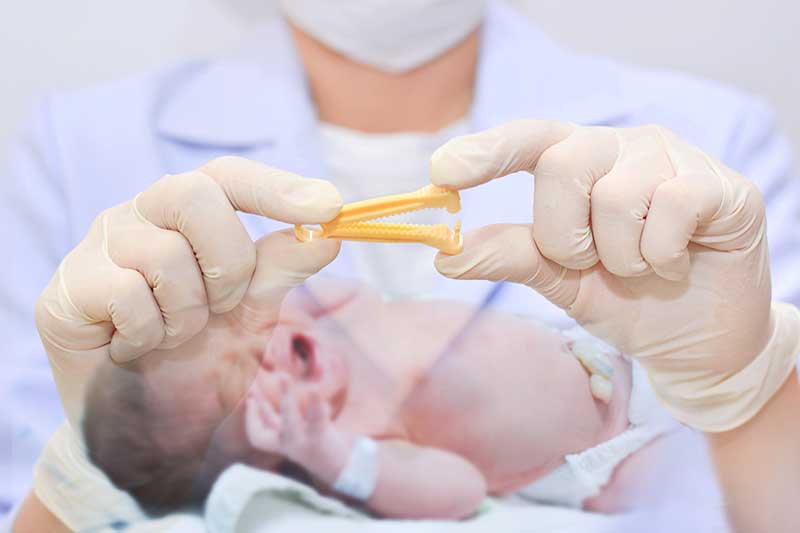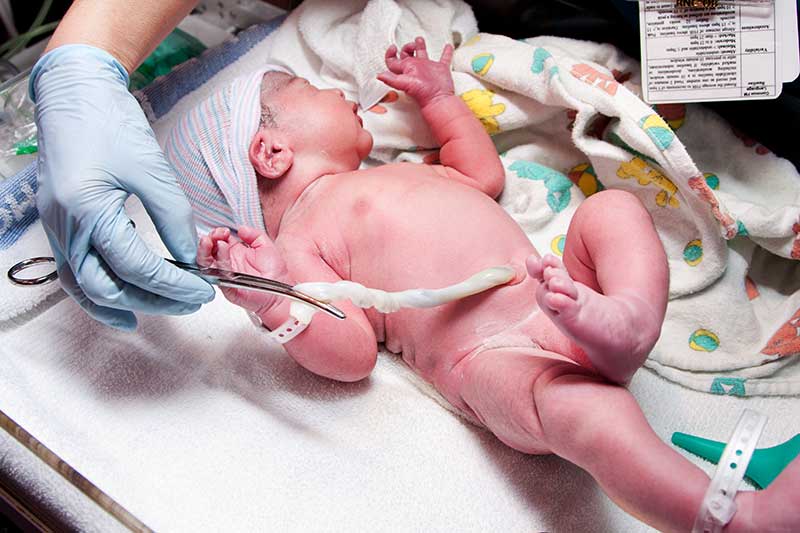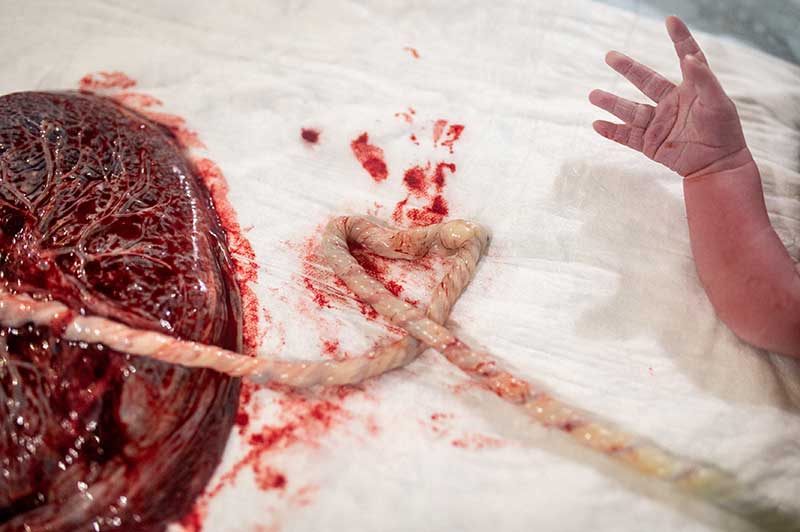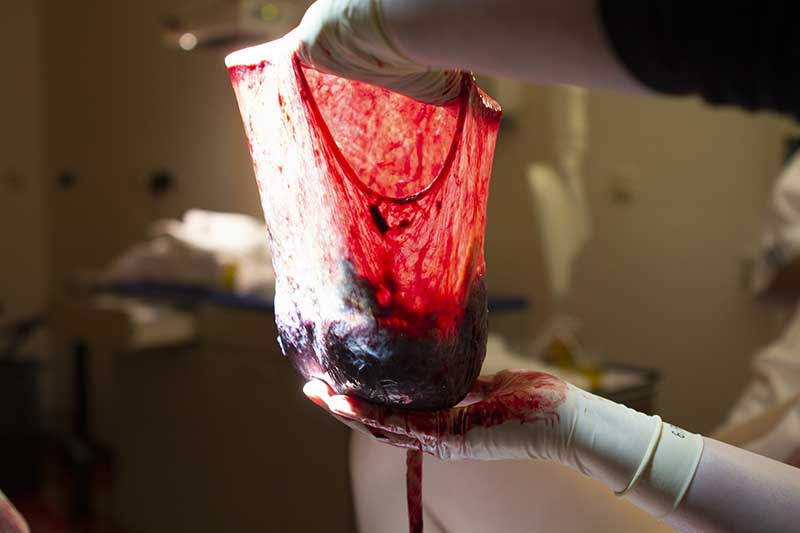Let's Talk Human Placenta Function with Dr Robyn Thompson
In the video above, I had the opportunity to interview Dr Robyn Thompson, experienced midwife and founder of The Thompson Method, about placenta function and how amazing the umbilical cord truly is, particularly in relation to birth and breastfeeding.
If you're looking to learn more about placenta function, childbirth and the process of birthing the placenta, you will be amazed by what Dr Robyn shares.
The 4 main points of discussion are:
- Delayed cord clamping
- The Nuchal Cord
- Lotus Birth
- Placenta Function
So the power of the placenta function? I feel like there is a huge lack of knowledge surrounding this topic. I know that I have lots to learn, and I've already given birth to one child.
So, the interview with Dr Robyn Thompson, experienced midwife and founder of The Thompson Method, starts with the first important point...
Delayed Cord Clamping
What is delayed cord clamping?
Dr Robyn Thompson
Speaking from a midwife point of view because there'll be various approaches to the placenta function, but from my experience over many years, delayed cord clamping way back in my early midwifery days wasn't really regarded as something important.
They were changing, cutting the cord early back then in my experience, concerned that the babies were becoming jaundice because they were leaving the cord flow for too long.
In actual fact, they didn't take into consideration the vitamin K, Hep B and all the other things that babies were being give to babies that may have an effect on the metabolic processing of those things. Photo: close up of doctor holding yellow umbilical cord clamp used to clamp off the umbilical cord after a baby's birth.
Photo: close up of doctor holding yellow umbilical cord clamp used to clamp off the umbilical cord after a baby's birth.
Knowledge and understanding of delayed cord clamping has since improved.
You could probably say it's the 50 year turnaround, like a lot of things, because the baby is continually receiving the placental flow.
So that means the baby's red blood cells, all the nourishment the baby is still getting until the placenta is ready to separate. And when that takes place, you see changes take place.
So delayed cord clamping in healthy, normal circumstances - it may be different in a circumstance where there's an urgent or an emergency situation, either for the baby or the mother, or both. And so, I don't think things are hard and fast.
I think the decisions that are made if they need to be, otherwise don't interfere.
Decisions are based on being in the moment and what's happening then, maybe some previous knowledge, maybe some family history, but more so in the moment. And so you deal with the things as they happen and sometimes that's necessary.
How important is delayed cord clamping?
Dr Robyn Thompson
Well, I think it's very important for the baby to receive the blood flow that it requires until the flow from the placenta through the cord has stopped. And that then is the process of the third stage beginning.
So the baby's just born, still receiving the beautiful flow from the mother, not able to drink the amniotic fluid anymore.
All of those things I think come together as one very important process under healthy normal conditions.
So delayed cord clamping means not cutting the cord, not interfering with the cord, not clamping the cord but just letting the process happen with the midwife taking care to observe and to note what's going on.
Allowing placenta function to continue after birth, how long do we delay the cutting of the cord?
Dr Robyn Thompson
You can see the cord changing and it starts to become thin, so the blood flow through the two arteries in the vein is now slowing down.
What signs are given to you by being observant quietly, not touching unless necessary, observing when the placental flow is slowing and finishing?
The cord thins down and becomes white because the flow is changing.
Then you just wait.
The mother tells you by her behaviour, her sounds or however she chooses to speak with you, that she can feel the placenta descending. There's always a process that goes on. And it's all, from my point of view, pretty magical how it all works.
Chelsea
I don't know about our readers, but that is definitely completely different to my personal experience.
I actually requested delayed cord clamping and I feel like the professionals almost relied on my lack of knowledge, because now that I know a little bit more about it, the cord was not white when we were asked if we wanted to cut it.
And I hadn't birthed the placenta yet either.
So that's really, really interesting. I'm sure everyone will agree.
It's also magical.
So what about the nuchal cord and when it's wrapped around the baby's neck?
What is the Nuchal Cord and how does it affect placenta function?
Dr Robyn Thompson
The cord can be around the baby's neck, around the baby's arm, around the body.
I've had one woman who had five loops of cord around the baby's body, and she had a beautiful birth, no major problems, but she did go to her hands and knees to give birth.
That's how she felt most comfortable.
I've seen cord around the neck as a baby's being born in the water. So just gently loosening it so that it doesn't pull tight. And then when the baby was born, you could see it was around the baby's body.
So in this case, I was gently rolling the baby as it come to the mother through the water and it unraveled the cord.
Again, there's no there's no one way for any woman at all. It depends on the circumstances.
Actually, cord presentation or cord compression is another difficult situation where each contraction a mother has compresses the cord.
If the cord is tight around the baby's neck, that's a problem too, because sometimes you'll see changes in the baby's heart rate. And the trigger for that is that if you see a drop in the heart rate at the peak of every contraction, and it's slow to recover, then your first knowledge is cord involvement.
Dr Robyn Thompson Shares a Personal Experience
Nuchal Cord Wrapping
As a young midwife, I called for help from one of the senior midwives. They came in, knew exactly what to do, I was asked to, with the woman's consent, hold the baby's head back off the cord.
This was because the cord was presenting in front of the head, which meant that once I was involved, I really couldn't let that little baby's head go with the next contraction. So it became an emergency.
I went on the trolley with her and held the baby's head all the way to the lift and down to the operating room and stayed there until the surgeon was ready. And then they did Caesarean section on that little baby.
So that was a very young, early experience for me. Of course, I've had many, many experiences, but that was one. 
When there is a knot in the cord
Dr Robyn Thompson
Now, there can be a false knot, which is not a real knot, or there can be a true knot. And I've seen lots of true knots over the years that haven't caused a problem. So again, you don't know until the moment.
You become a skilled midwife and you learn all of those things as you go along and how to deal with those things and of course any compression on the cord means try changing positions, in the meantime, if you require help, while help is coming.
It's a moment-by-moment thing, it's not something that you can always predict. This is how you learn.
I don't know what the statistics are on all of these things on Nuchal Cord. I don't know what the statistics are worldwide on knots in the cord.
I just know what I've seen and how I've worked with it. And honestly, I've never had a major problem. I've had a colleague who had a home birth with me, she picked up the cord, she held it and said, "Look at this Rob, it's a true knot." So, we've got a little picture of her true knot in her hand with her baby.
Chelsea
It's quite common for women to be rushed into surgery when a nuchal cord is expected, is this because, as you said, it can lower the baby's heart rate with the loss of placenta function?
Dr Robyn Thompson
It doesn't always lower heart rate.
Sometimes you won't know till the baby's born and I'm not sure that ultrasound is always accurate either.
That's a new invention compared to what I used to work with. I didn't work with ultrasound back then. But you do get used to hearing, observing, and being sure that you're in tune with that woman all the time.
What is a Lotus Birth?
Dr Robyn Thompson
A Lotus birth is when the placenta and the cord is born, and we don't do anything - no intervention.
It's not necessary to give oxytocin because she's not bleeding heavily. And the cord stays attached to the baby. So we don't actually move the cord, remove the cord, cut or clamp the cord at all.
Again, I have to talk about my experience, because in my experience, the cord came off fairly quickly. It would separate within about three days, but not a set three days.
Nothing's that mathematical.
Usually you'd see it starting to separate and the mother has the placenta with her all the time with the baby. And she might have it in a little bag. Sometimes they cover it with salt.

Pic: Closeup of a human placenta and a newborn child on bedsheets in the hospital
A Lotus birth is one of the calmest less interventionist ways of giving birth.
I have seen a couple who forgot about their placenta, it was in a bowl, and it was sitting at the window. And had been there for about five days.
Suddenly the partner said, "Oh, gosh, look, we forgot about this."
So we had a look at it and it was perfect. If it hadn't deteriorated in any way, it wasn't obvious unless you were to looking through a microscope. But it was absolutely perfect. So he then took it and buried it in his spice garden.
How does a Lotus Birth work?
Dr Robyn Thompson
It separates from the baby's umbilicus. We don't cut it. It separates from there when it's ready and it's carried with the baby.
So it's probably in a little bag and carried however the mother feels comfortable carrying it. And it separates when it's ready. Then the umbilicus starts to form a scab inside, where the attachment was, and however it separates, whether it separates when it's been clamped or cut as well.
That little scab takes around 10 days to come off and on the 10th day, this is my experience again with the women that I home birthed with, there would be a little blood from the umbilicus.
You'd see it on the nappy where the scab had come off and then the mother would have a little bleed as well at the same time.
So that was the shedding of the fimbriated ends which have now created, you could say, like a scab inside the uterus, in the fundus of the uterus or wherever the placenta was.
Then it's obviously the shedding of that, end of that separation is around the 10th day she would bleed as well.
It was quite fascinating watching that, and then reassuring people, and of course, keeping an eye on the blood loss making sure it's not a lot of blood loss, because you can have what what's referred to as retained products of conception, membrane pieces, or parts of the placenta that haven't come and then you can experience heavy bleeding.
You may or may not, they might just shed that. There may be some clots, but you've got to be really careful that you watch, and you listen to the woman and whatever she tells you, especially if she's gone home and you're in hospital, and she rings you. It's very, very important to know what's happening. So then knowing a little bit further back, what happened with her birth is also very important at that stage too.
The Lotus Birth is very gentle. It's very much what a mother wants to do. It's not what we want to do. It's about what she needs to do. And it's very gentle, very calm most of the time. In fact, I haven't seen a problem with a Lotus Birth in my experience.
What is the function of the placenta?
The placenta development and function is to provide oxygen and nutrients to the growing baby in a woman's uterus, via the umbilical cord. It is attached to the wall of the uterus and is also responsible for removing waste products as the baby grows and develops.
As a midwife, I used to love looking at the placenta, and I still do. There's a placental site that I go to, Patricia Edmonds in the USA runs that site. And it's just magic, watching the different placentas and things that we were taught that were abnormal, were turning out not to be a problem for a lot of women too.
So looking at the shape, where the vessels come, how the membranes are attached, any infarcted areas, meaning white areas, a whole range of things like that you can see the placenta function by checking it.
We used to have to check it thoroughly and document what we found as well, in the in the maternal record.
pic: a placenta is held up after birth
Placenta function coming to an end following the birth of your baby
Dr Robyn Thompson
When I think about how in most circumstances, not all but the placenta's fimbriated ends embed into the uterus, we say the fundus, but sometimes it embeds a bit lower. And again, it depends where it is, as well.
But when the placenta is coming down, you can just imagine that these are now letting go. And there's bleeding going on. Of course, there's bleeding going on, because they're coming away from the fundus of the uterus inside.
So what happens then, is it forms a clot over the the maternal side of the placenta. And that clot with the contraction of the uterus is compressing and compressing. And that's what helps stop the bleeding.
So we don't need to push and rub too much. Well certainly you don't rub a mother's uterus until the placenta is born.
Common painful practices used to birth the placenta
Dr Robyn Thompson
I have seen some very painful episodes of women who've been having their fundus rubbed to try and contract the uterus to stop the bleeding and it's been so painful that they've cried. I don't do that to anybody.
Not everybody does that, of course. It's about the uterus contracting to reduce the bleeding. We have to have a certain amount of blood loss because the blood coming through the placenta can't go back into the maternal cardiovascular system, because it'll just overload it.
So it has to go and it's meant to have some bleeding. And you know, they put mathematics on it. But one of my best obstetrician colleagues used to say to me, "Look at the woman, Robyn, look at her size, look at her as a person and then evaluate what you think is reasonable."
So, he taught me that a long time ago. He also observed me practising a couple of home births and he's sitting in the corner with his hands under his thighs and later on, I said, "Why were you sitting like that?"
He said, "The UK midwives told me to sit on my hands".
That was his response!
Don't get involved unless you really have to, but he was one of the most reliable complementary communicative Obstetricians that I ever knew.
There were a few but he was one of them that was very, very precious to women, and very, very learned for me.
The Placenta and the Placenta Function is Magical
In terms of the placenta function, I think about the volume of blood that it puts through and the nutrients, everything that it carries, the immunity that the babies get through the maternal placenta, going through the system and back through the system and doing that for the whole of a wonderful pregnancy.
The placenta in all its glory is just brilliant!
Last words from Dr Robyn Thompson
Every mother, every baby, every placenta, every umbilical cord is genetically unique.
The unique healthy placenta is one of the most incredible vital organs which implants in the female uterus for the sole benefit of uniting a mother with her developing foetus to sustain intrauterine nourishment and oxygenation via continuous exchange of blood flow via the incredible connection of the umbilical cord through two arteries and one vein.
Generally, the connection of these vital organs sustains a pregnancy from conception until the birth of the baby.
It is important in the absence of major complications to avoid severing (cutting) the cord until the last blood has been transported from the mother to her baby. This process is visible by the changing colour, shape and width of the cord. Once the mother and her unique placenta have completed the final blood flow, the cord will thin down, become white with no further blood flow visible. Wait, be patient, respectfully listen to the mother, seek her consent (which may have been discussed in consultation with her Birth Plan).
Seek her advice as to who she may like to participate in this momentous time of separation.
Happy birthing, stay strong, and my suggestion is that it's in your good time, not in institutional time.
It's your body and your baby.
Chelsea
Dr Robyn Thompson is the founder of The Thompson Method which is becoming a worldwide movement because of her extremely gentle and informative approach, which is empowering women like myself worldwide.
I am a Mother here in the UK, who is continually learning about pregnancy, labor, birth and breastfeeding as I embark on my journey with the the amazing team behind the Thompson Method.
If you're new here, welcome to our incredible community. I hope you have found our discussion on placenta function as helpful as I have.
Love Dr Robyn and want to find out more about The Thompson Method?
If you would like to get breastfeeding off the best possible start, download Dr Robyn’s ‘Gentle Guide Towards Pain-Free Breastfeeding’ => Download it here
If you've found this blog post and Dr Robyn's live interview to be helpful, you may like to join our free Facebook Group to learn more about what's possible with the Thompson Method for your birth and breastfeeding journey.
And of course, click the video about if you'd like to watch the full interview.
To learn more about the The Thompson Method breastfeeding course and support group visit => https://www.thethompsonmethod.com/breastfeeding-course
From all of us at The Thompson Method team, happy birthing & happy breastfeeding.
FOLLOW The Thompson Method Breastfeeding on Social Media
► Facebook: https://www.facebook.com/TheThompsonMethod
► Instagram: https://www.instagram.com/TheThompsonMethod
► YouTube: https://www.youtube.com/TheThompsonMethod
► Pinterest: https://www.pinterest.com.au/TheThompsonMethod
► LinkedIn: https://www.linkedin/TheThompsonMethod
♡ ♡ ♡ ♡ ♡ ♡ ♡ ♡ ♡ ♡ ♡ ♡ ♡ ♡ ♡




